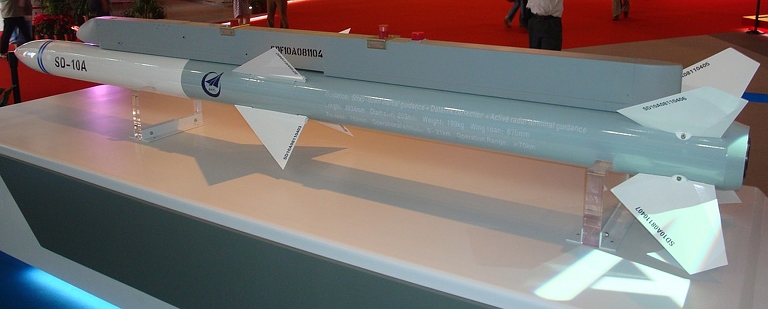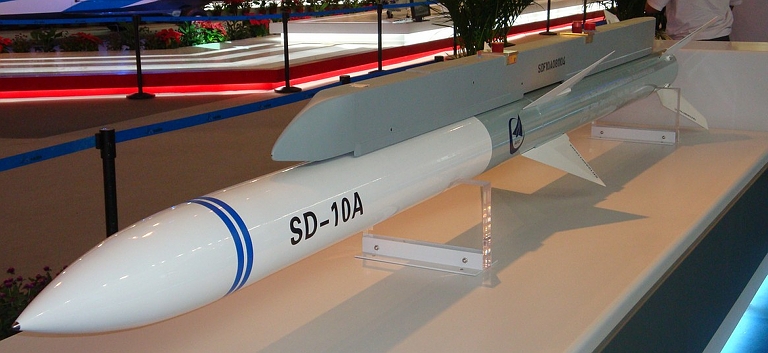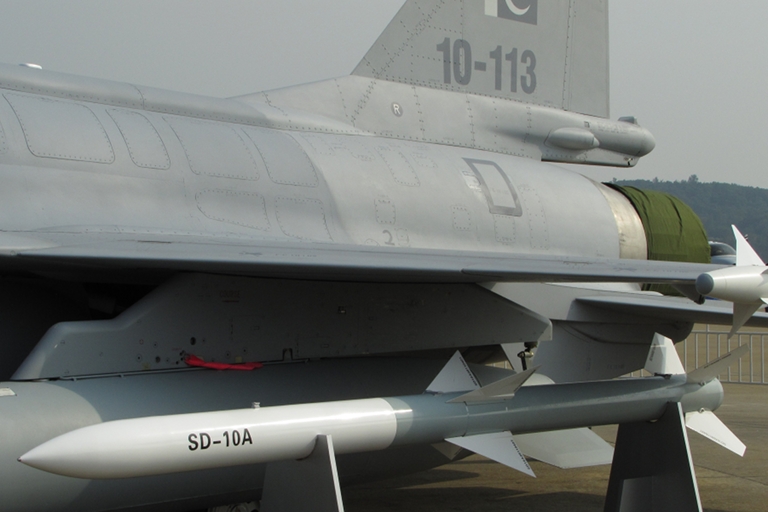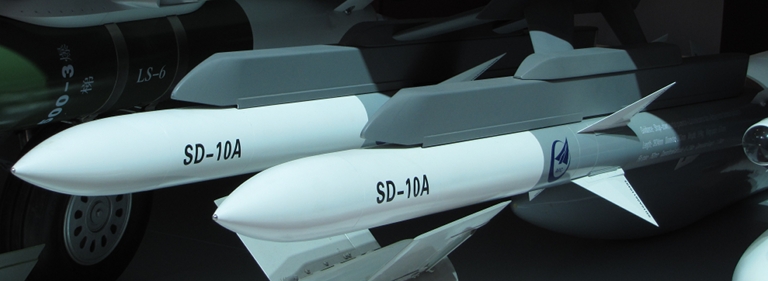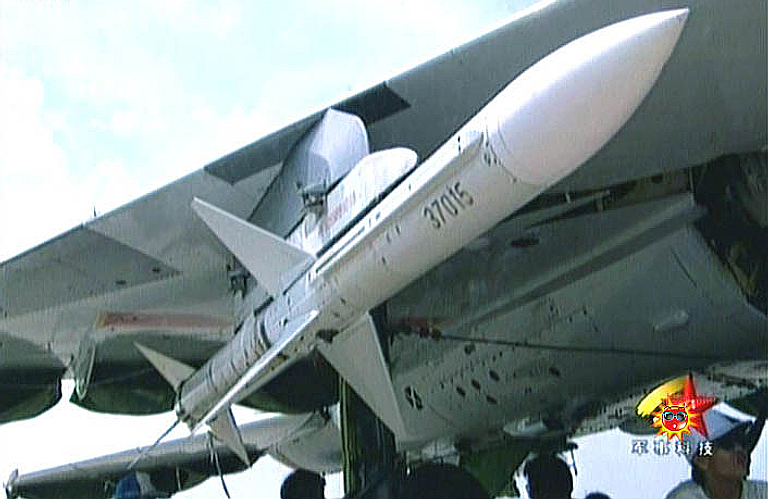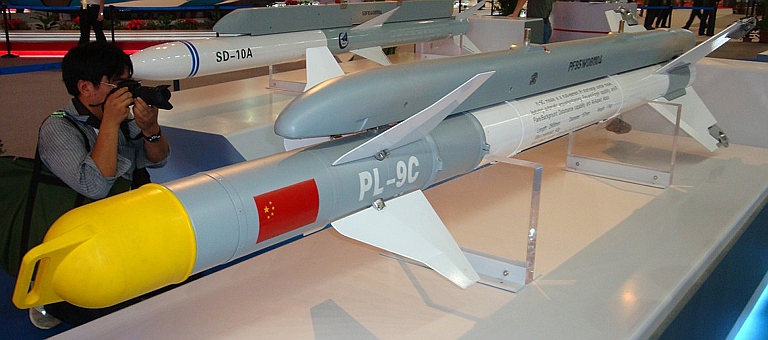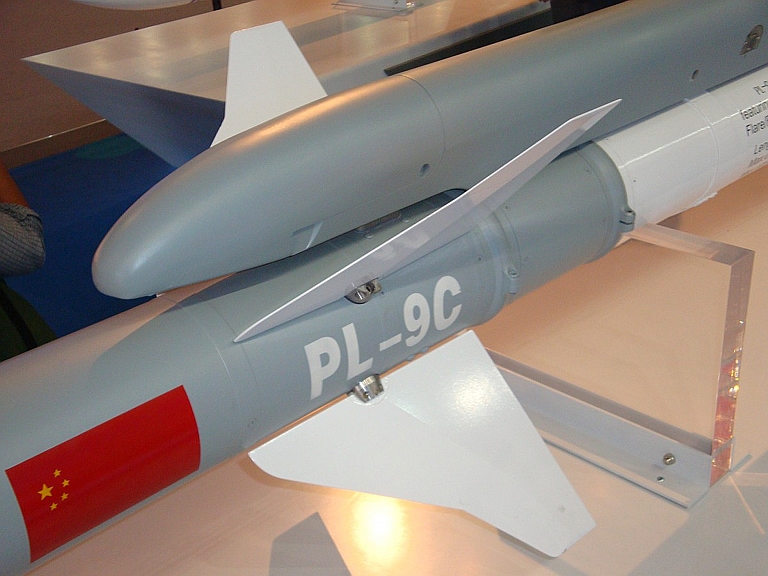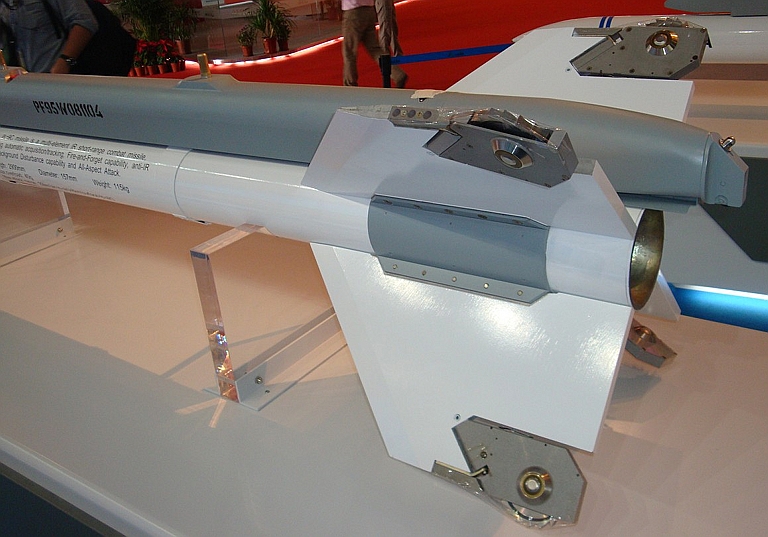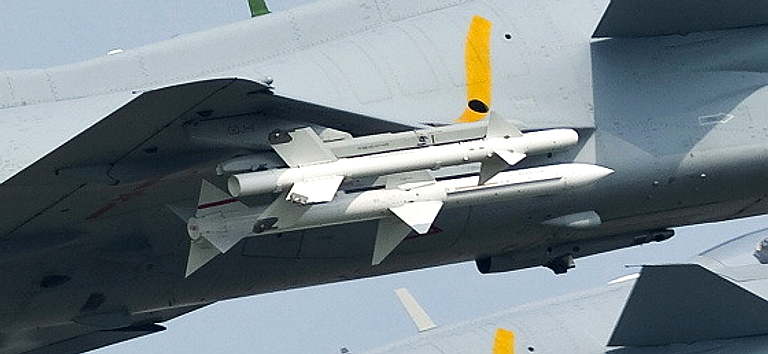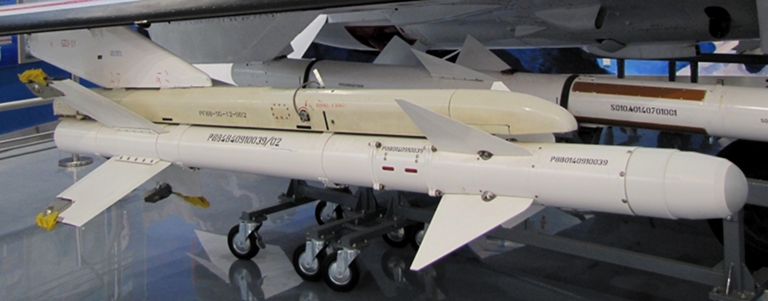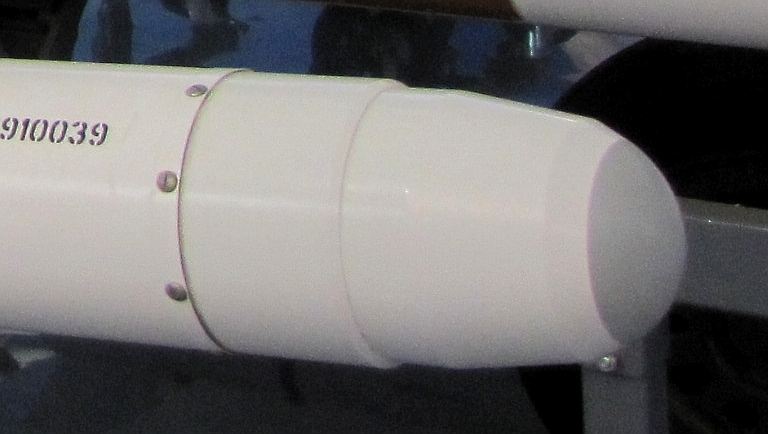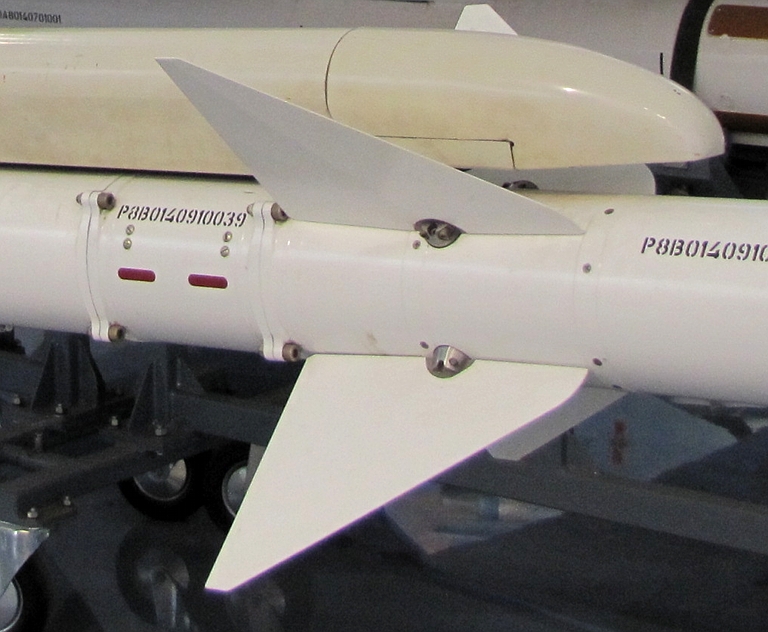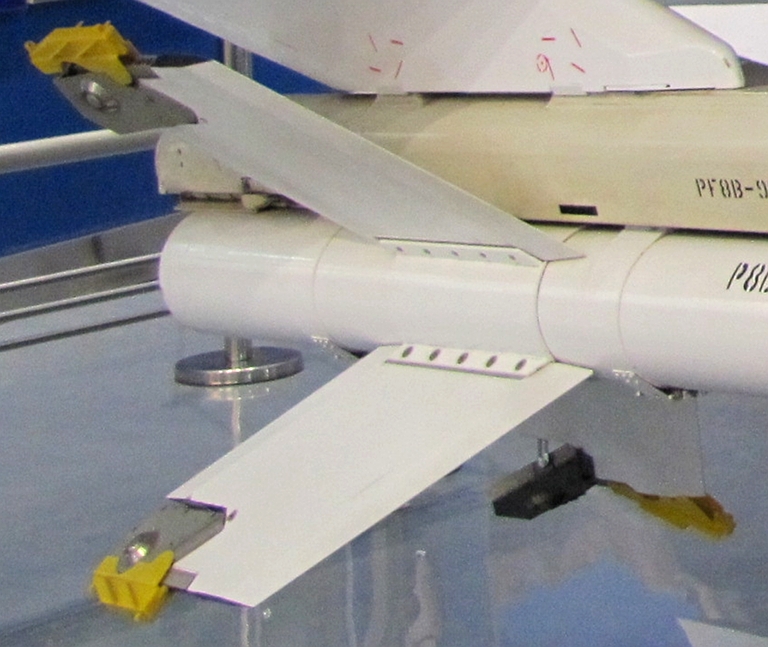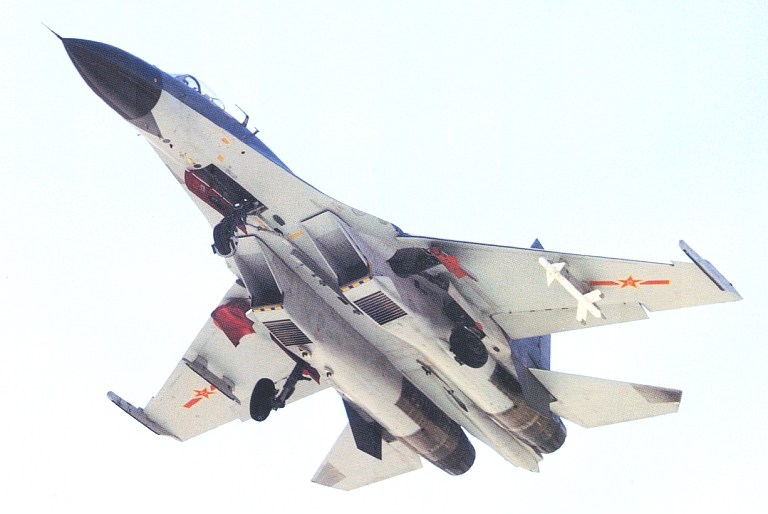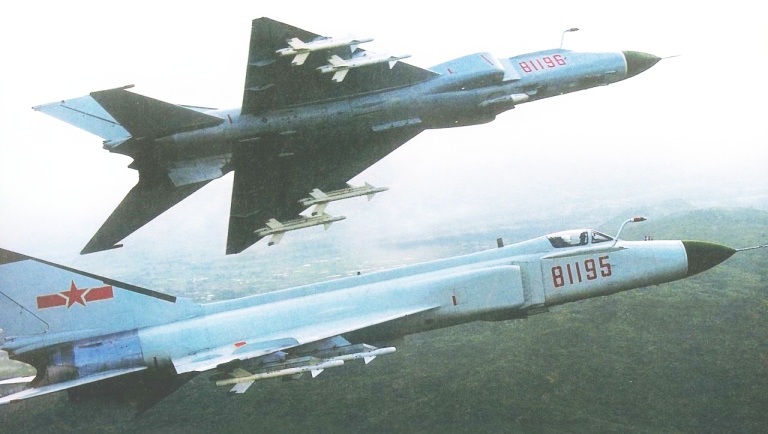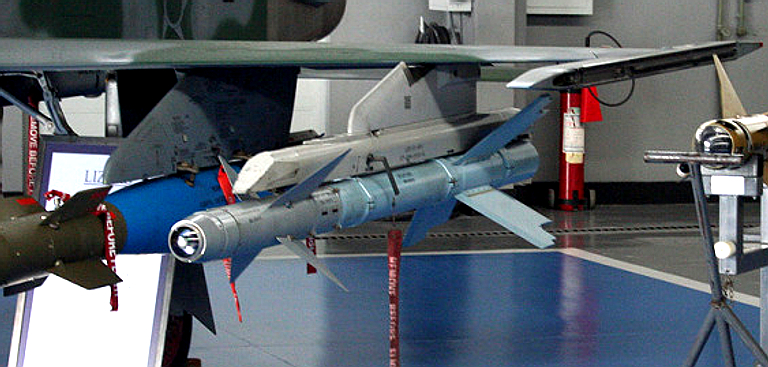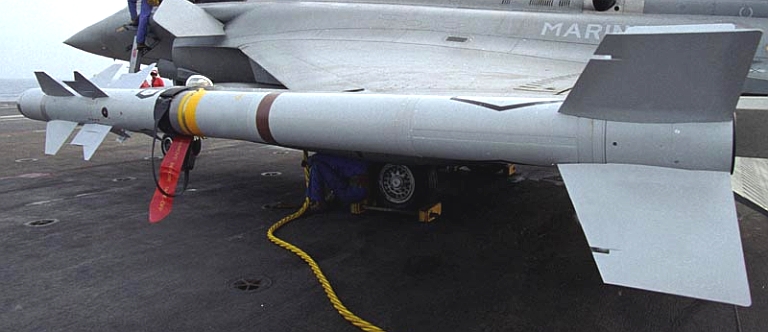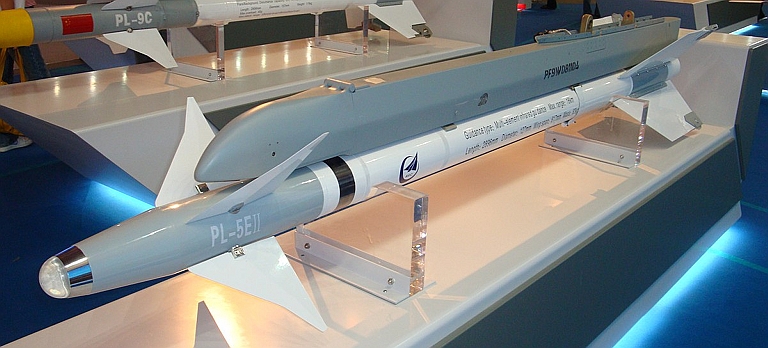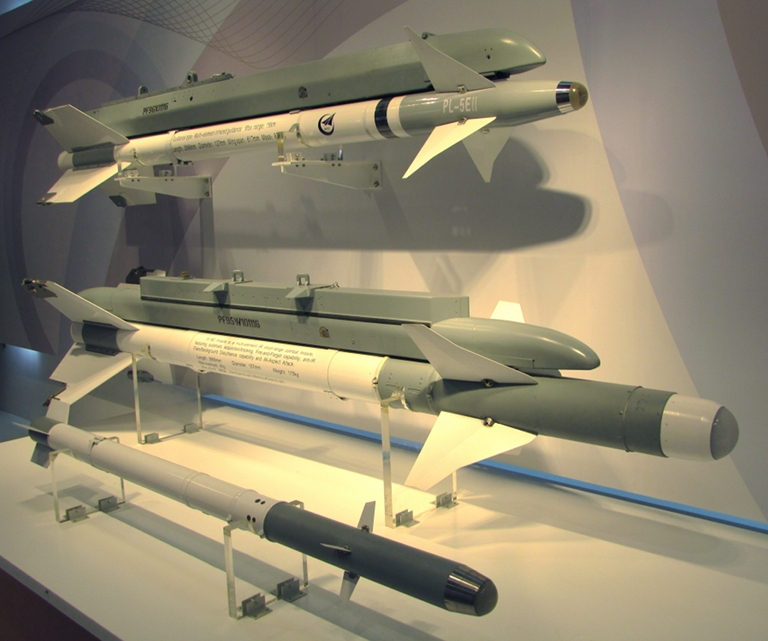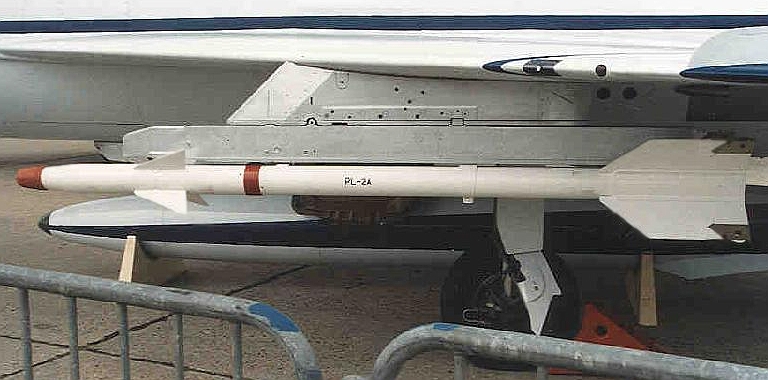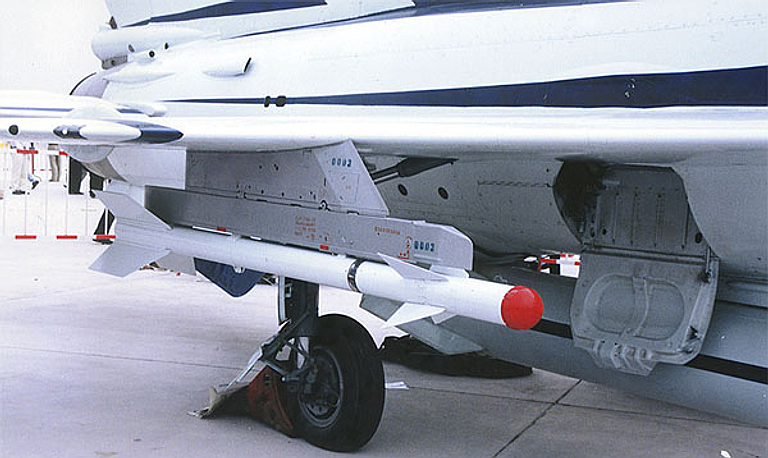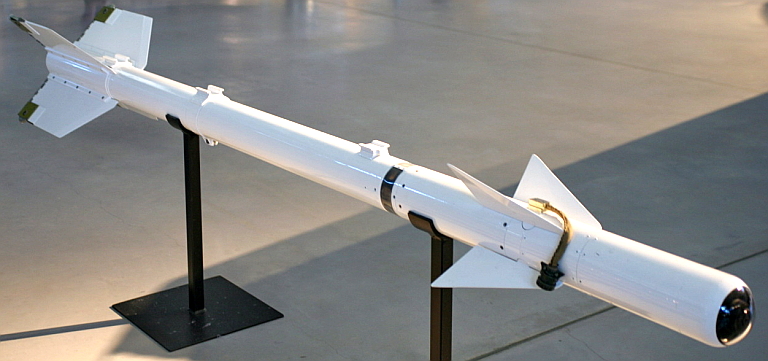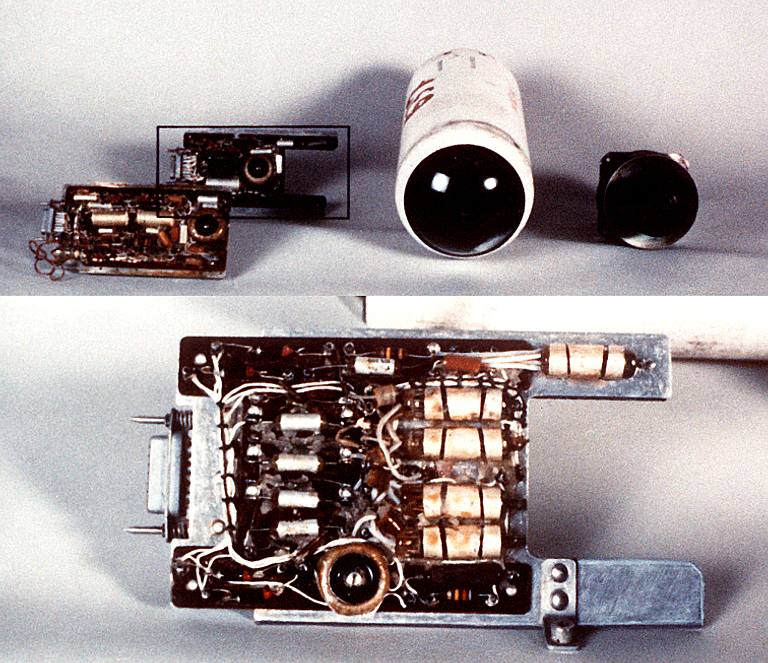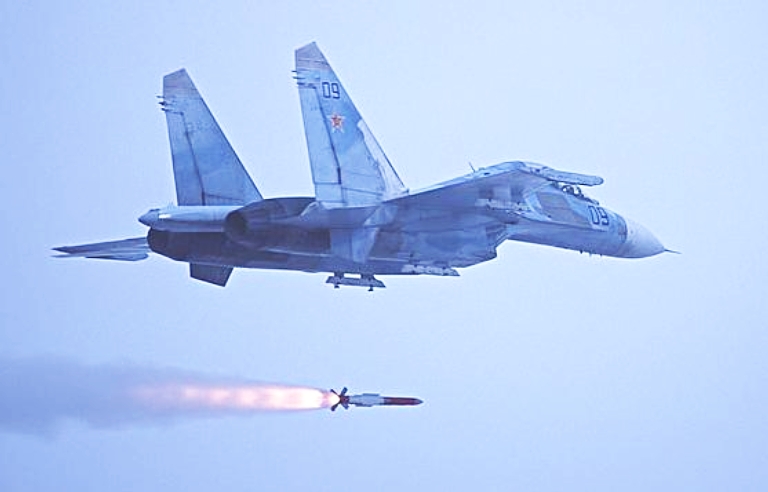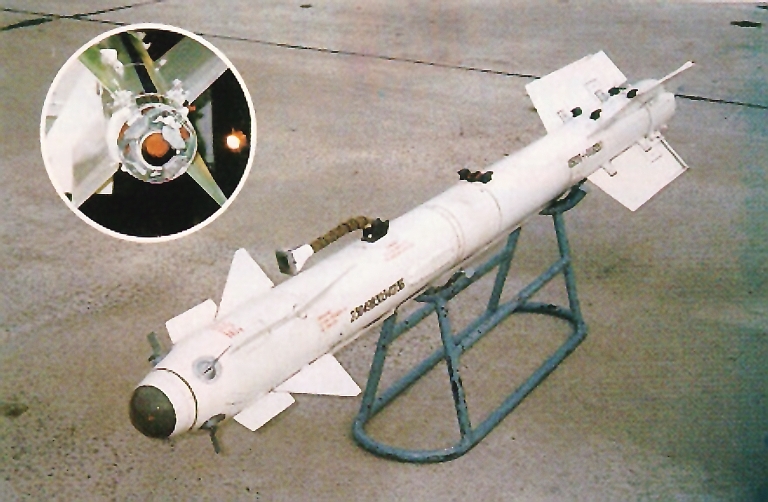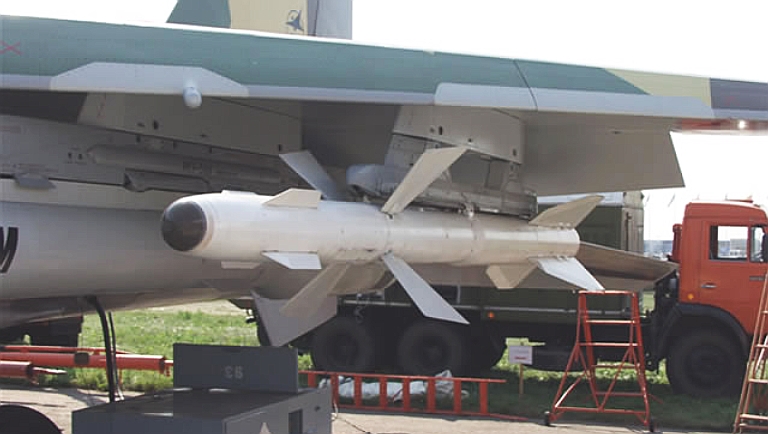|
||||||||||||||||||||||
![Home - Air Power Australia Website [Click for more ...]](APA/APA-Title-Main.png) |
||||||||||||||||||||||
![Sukhoi PAK-FA and Flanker Index Page [Click for more ...]](APA/flanker.png) |
![F-35 Joint Strike Fighter Index Page [Click for more ...]](APA/jsf.png) |
![Weapons Technology Index Page [Click for more ...]](APA/weps.png) |
![News and Media Related Material Index Page [Click for more ...]](APA/media.png) |
|||||||||||||||||||
![Surface to Air Missile Systems / Integrated Air Defence Systems Index Page [Click for more ...]](APA/sams-iads.png) |
![Ballistic Missiles and Missile Defence Page [Click for more ...]](APA/msls-bmd.png) |
![Air Power and National Military Strategy Index Page [Click for more ...]](APA/strategy.png) |
![Military Aviation Historical Topics Index Page [Click for more ...]](APA/history.png)
|
![Intelligence, Surveillance and Reconnaissance and Network Centric Warfare Index Page [Click for more ...]](APA/isr-ncw.png) |
![Information Warfare / Operations and Electronic Warfare Index Page [Click for more ...]](APA/iw.png) |
![Systems and Basic Technology Index Page [Click for more ...]](APA/technology.png) |
![Related Links Index Page [Click for more ...]](APA/links.png) |
|||||||||||||||
![Homepage of Australia's First Online Journal Covering Air Power Issues (ISSN 1832-2433) [Click for more ...]](APA/apa-analyses.png) |
||||||||||||||||||||||
| Last Updated: Mon Jan 27 11:18:09 UTC 2014 | ||||||||||||||||||||||
|
||||||||||||||||||||||
|
PLA Air to Air Missiles
Technical Report APA-TR-2009-0802 |
by Dr Carlo Kopp, AFAIAA, SMIEEE, PEng August, 2009 Text © 2005, 2009 Carlo Kopp Updated August, 2010 Updated June, 2011 Updated April, 2012 Line Artwork © 2007 Carlo Kopp  |
|
|
|
BackgroundThe PLA-AF and PLA-N operate a diverse mix of indigenously
manufactured and imported Russian Air to Air Missiles (AAM), carried by
a no less diverse fleet of combat aircraft. While imported Russian R-27 / AA-10 Alamo, R-73 / AA-11 Archer
and R-77 / AA-12 Adder AAMs are primarily used with the imported
Russian built Su-27SK / J-11A and Su-30MKK/MK3 Flankers, indigenous
Chinese built weapons are dominant across the Chinese built fleets of
J-10A/S Sinocanard, J-11B Sino-Flanker, J-8 Finback, J-7 Fishbed, J-6
Farmer, A-5/Q-5 Fantan, and JH-7 Flying Leopard. A much more diverse inventory of heatseeking short range
weapons exists. These include analogues or derivatives of a range of
Western missiles, such as the AIM-9 family and Rafael Python 3 series,
and uniquely Chinese developments such as the TY-90, designed for air
combat between helicopters. Most Chinese built AAMs have been adapted for use as SAMs,
either land based, naval, or both. Most are also being offered widely
for export. In perspective, the unpalatable reality of this decade is that Australia's RAAF faces a genuine 'rainbow threat' environment across the wider region. The sheer diversity of missile types in service or being introduced, be they of US, Russian, EU, Israeli or Chinese origin, and the prospect of evolving regional clone variants and derivatives, presents a genuine long term problem in intelligence gathering, analysis and countermeasures library maintenance. Two key issues have arisen during this decade. The first is
the
large scale export of advanced variants of the Russian R-74, R-27 and
R-77, arming MiG and Sukhoi fighters. These weapons are highly
competitive against US and EU sourced AAMs operated by the RAAF, and
can be expected to further evolve over time. With diverse mixes of
seeker types in the BVR missiles, defending against them will present
real challenges. A robust apporach will require investment in training,
including simulation, tactics development, and adequate electronic and
infrared countermeasures on RAAF aircraft. none of these considerations
have been addressed to date in existing or planned RAAF aircraft. The second issue to arise is the future export of very long range 'AWACS killer' missiles, which are the poor man's equaliser against an opponent with an advantage in AEW&C capabilities. Much of the current force structure plan is predicated on the RAAF holding an assymetric advantage in AEW&C capability over any opponent, indefinitely. Missiles such as the R-172 and R-37 allow any Sukhoi operator to threaten an opposing AEW&C aircraft from a safe distance. There can be no doubt that a future RAAF force structure will
have to be planned around missile capabilities now developing across
the region, and compromises are simply not an option in the long term. |
 |
PLA-AF and PLA-N AAMs |
LETRI “PL-13” “Sino-Meteor”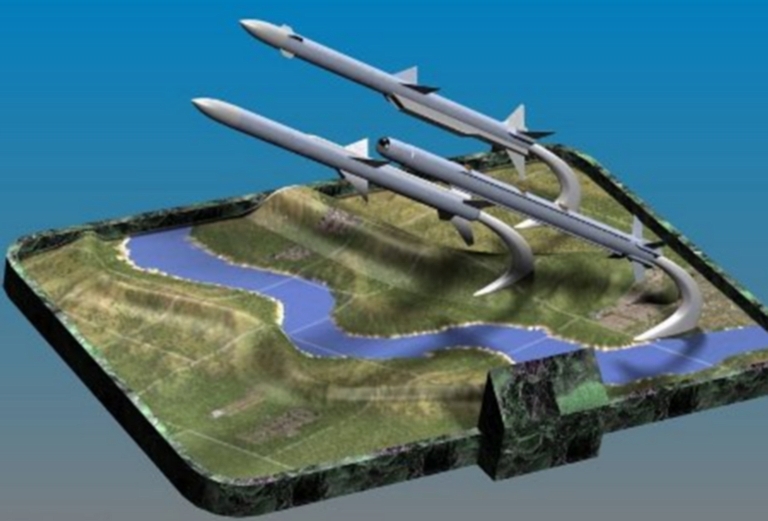 In 2008 an image appeared on
the Chinese internet showing a solid ramjet powered AAM evidently based
on the existing PL-12 design. The status of this design is not clear.
Conceptually it is closest to the MBDA Meteor AAM planned for the Royal
Air Force.
If such a missile is in development it would likely be similar in performance to the Meteor, which has exceptionally high endgame lethality due to the increased sustained G capability arising from persistent engine thrust, compared to conventional single and dual pulse rocket AAMs.  MBDA Meteor (MBDA). |
LETRI SD-10/PL-12 “Sino-AMRAAM”
China's indigenous equivalent to the AMRAAM is the PL-12/SD-10, claimed to use the seeker and other components from the Russian R-77 AMRAAM-ski. Credited with competitive performance against the AMRAAM, the PL-12 is expected to be deployed on the Su-27, Su-30, J-10 (image © 2009, Zhenguan Studio). While some confusion remains
about designations, most sources
identify the SD-10 and PL-12 as the same missile, China's equivalent to
the AMRAAM. This weapon is in sizing and configuration very similar to
the AIM-120A, but employs a unique tail planform. Equipped with an
active radar seeker, and datalink aided inertial midcourse guidance,
this missile is a credible player against the AMRAAM and R-77 series.
The indigenous AMR-1 active seeker is identified with the PL-12, and
numerous reports exist claiming that it is a derivative of the Russian
Agat 9B-1348E seeker package used in the R-77 series. The missile is
widely credited with superior range performance to the AIM-120A-C
variants. The production status of the
PL-12 is unclear, but the missile
has been claimed as a future weapon for the indigenous J-10 fighter and
the Su-27SK and Su-30, replacing imported R-77s on the latter. The
missile has been photographed on the J-10A, J-10S and J-11B. A variant with an all aspect
infrared seeker may exist, analogous to Russian heatseeking variants of
the R-27 / AA-10 Alamo and R-77 / AA-12 Adder. There is little doubt that the
PL-12 closes most of the
technology gap between Chinese built BVR missiles, and in service
Western BVR missiles.
Luoyang PL-12/SD-10A JF-17 display, exported to Pakistan (image © 2010 Air Power Australia, via Zhenguan Studio).
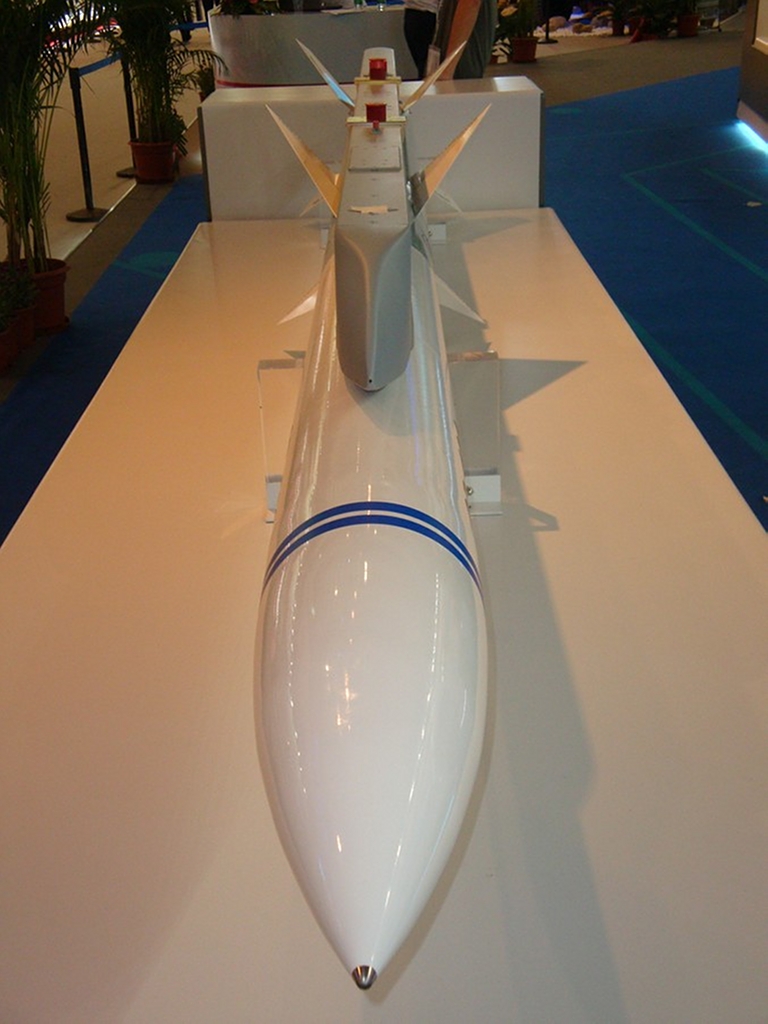 Radome of PL-12 / SD-10A on display at Zhuhai 2008 (image © 2009, Zhenguan Studio). 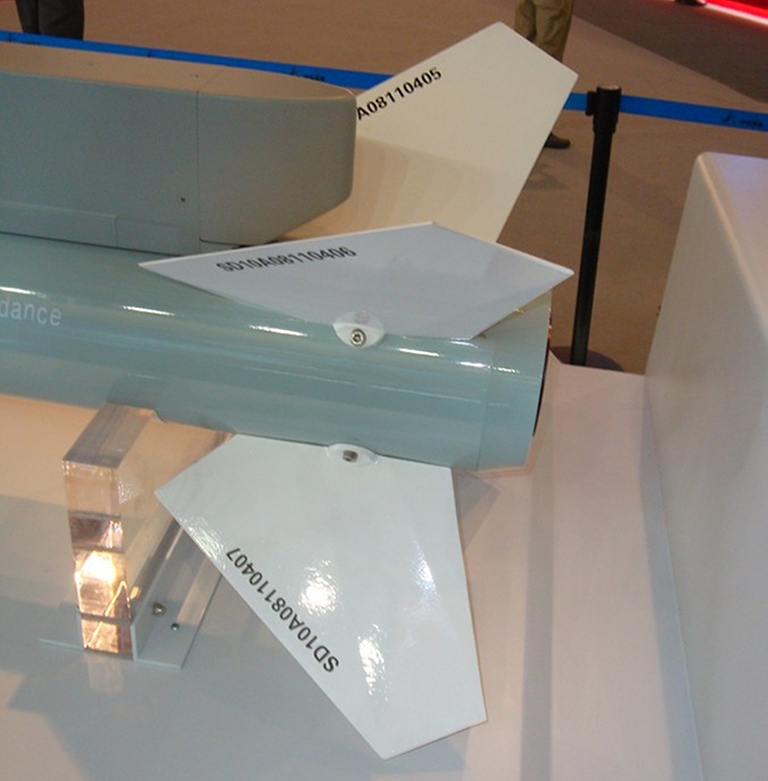 Tail section of PL-12 / SD-10A on display at Zhuhai 2008 (image © 2009, Zhenguan Studio). 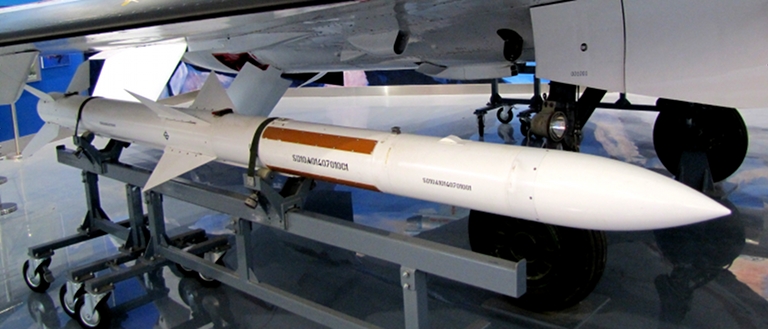 PL-12
/
SD-10A
on
display at Datangshan in 2010 (Zhenguan
Studio, © 2010, Air Power
Australia).
 PL-12
/
SD-10A being loaded on PLA-N J-8F Finback D fighter (Chinese
Internet).
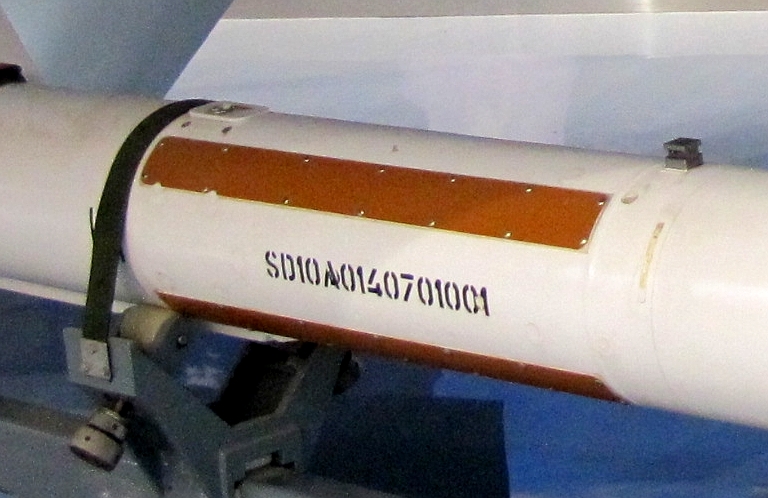 Detail
of
RF
proximity fuse antennas on PL-12 /
SD-10A (Zhenguan Studio, © 2010, Air Power Australia).
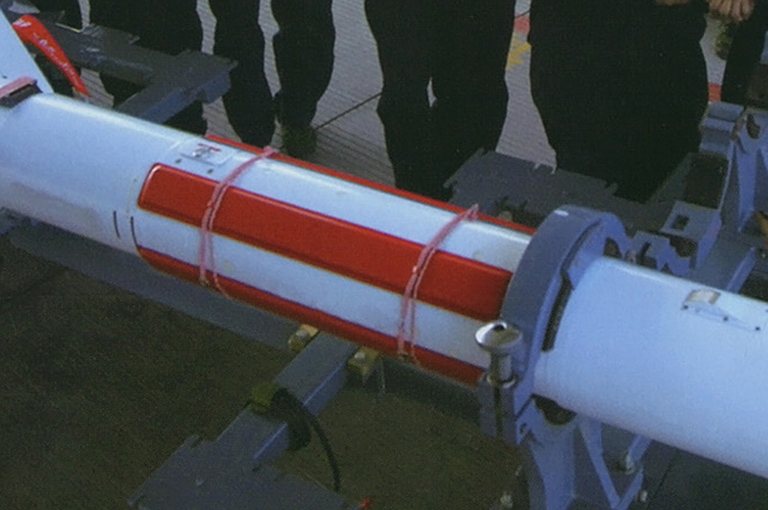 Detail
of
RF
proximity fuse antennas with protective covers fitted on PL-12 /
SD-10A (Chinese Internet).
|
Luoyang PL-ASR/PL-10 High Agility Close Combat Missile This illustration of the
PL-ASR, also labelled the PL-10, emerged on a Chinese internet site
during 2008. The weapon is claimed to include a Lock On After Launch
(LOAL) capability, suggesting a high performance strapdown inertial
midcourse package in the guidance section. The design includes coupled
TVC vanes and tail controls to permit over the shoulder shots, intended
for use with a Helmet Mounted Sight or Display. Conceptually the
missile appears closest to the joint South African - Brazilian Denel
A-Darter.
 Denel
A-Darter Cutaway (Denel).
|
SAST PL-11/FD-60 Aspide
The
PL-11 was the first Chinese built radar guided AAM to be deployed in
large numbers. The design is a direct derivative of the monopulse
semi-active homing Aspide Mk.1 carried by Italian F-104S Starfighters,
both of the latter systems now retired. The PL-11 is derived from a licenced copy of the Selenia Aspide, itself an improved variant of the AIM-7E Sparrow. China had initially experimented with cloning the AIM-7B as the Luoyang PL-4, with a heatseeking and semi-active radar variant planned. This project was abandoned during the 1980s, in favour of the improved PL-10, itself abandoned later in favour of the licenced Aspide, the latter having the advantage of a jam resistant monopulse seeker. While it is known that Selenia
withdrew support for the Aspide
licence following 1989, the PL-11 was nevertheless deployed in the
1990s, on the indigenous J-8B Finback. Three variants are cited, the
basic semi-active homing PL-11 equivalent to an Aspide Mk.1, the
improved
PL-11A with more range and a midcourse inertial unit permitting
terminal phase only illumination, and the PL-11B or
PL-11AMR, claimed to be equipped with an active radar seeker and
equivalent to the defunct UK BAe Active Skyflash or Aspide Mk.2 - both
AIM-7
derivatives. The export variant is designated
the FD-60. 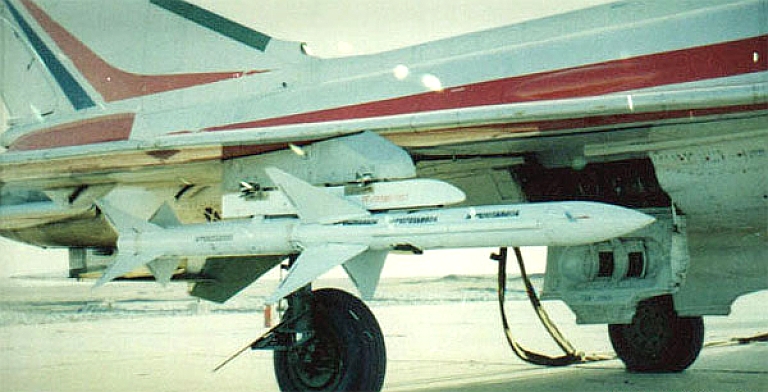 PL-11 Aspide. 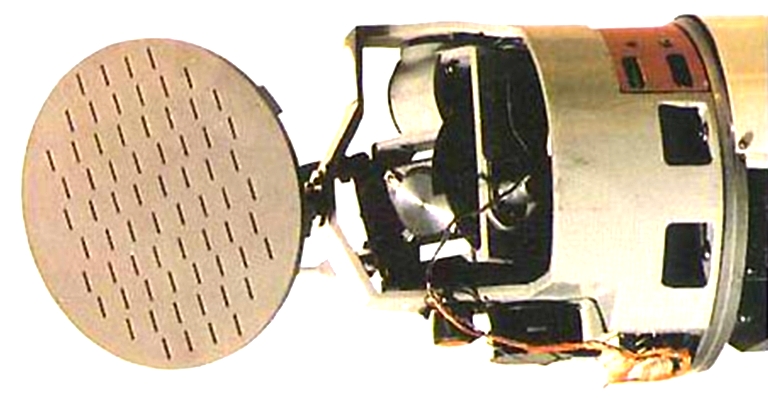 AMR-1 monopulse active radar homing seeker developed for the PL-11B. |
Luoyang PL-9
The
PL-9
was introduced during the 1990s, and is a separate evolution
of the PL-5 series, with capabilities similar to the AIM-9L/M (image © 2009, Zhenguan Studio).
The PL-9 is conceptually closest to the AIM-9P and appears to be an evolution of the PL-5 series missile, although Chinese sources claim the missile outperforms the AIM-9L/M. Production status of this missile remains unclear.
Detail of the PL-9C displayed at Zhuhai 2008 (image © 2009, Zhenguan Studio).
|
Luoyang PL-8
/ Rafael Python 3
|
Zhuzhou PL-7 / Matra R550 Magic
Matra
R550 Magic of the French Navy (French MoD). The PL-7 is a reverse engineered Matra R550 Magic WVR AAM, which entered production during the 1980s. The basic Magic I occupies the same niche as contemporary Sidewinders, but the missile uses a characteristic paired canard arrangement to improve turn rates. The seeker is nitrogen gas cooled using a Joule-Thompson element. While the PL-7 has been displayed
at airshows, there have been
no reports of significant production numbers or exports. The R550 was
exported to India for the Mirage 2000.
|
Vympel R-3/R-13, Luoyang/Hanzhong PL-2/PL-5 / AA-2 Atoll
The
PL-5E-II is the latest evolution of the cloned Chinese R-13, and is
comparable in configuration to the AIM-9L/M Sidewinders (image © 2009, Zhenguan Studio). The Soviet R-13 was cloned by
China as the PL-2, which later
evolved into the PL-3 and PL-5 missiles. No less than four variants of
the PL-5 are identified. The PL-5A was equivalent to the K-13R, but the
program was cancelled during the 1980s. The PL-5B did not enter
production until the 1980s, despite initial development starting two
decades earlier. The PL-5C is an improved PL-5B widely used by PLA-AF
and PLA-N units. The latest PL-5E is an attempt to outperform the
AIM-9L/M series, using an all aspect seeker, AIM-9L style double delta
canards, a 40 degree off boresight capability, and 40G manoeuvre
capability. PL-5 variants are used on the J-7 Fishbed, J-8 Finback,
FH-7 and Q-5 Fantan, J-7s and Q-5 having been widely exported in Asia.
PL-5E-II
Magnesium Fluoride seeker window. The choice of material indicates a 4
micron band detector (image
©
2009,
Zhenguan
Studio).
PL-5E-II,
PL-9C
and TY-90 (image © 2010 Air Power Australia, via Zhenguan Studio).
Luoyang PL-5E-II on JF-17 wingtip,
exported to Pakistan (image © 2010 Air Power Australia, via Zhenguan
Studio).
Early
models of the PL-2, PL-2A above and PL-2B below, were cloned Soviet
K-13 / AA-2 Atoll derivatives.
The
Vympel
K-13A
is
a reverse engineered AIM-9B Sidewinder (Wikipedia
image).
Vympel
K-13A
seeker
(US
DoD). |
TY-90/PL-90 Helicopter Air Air Missile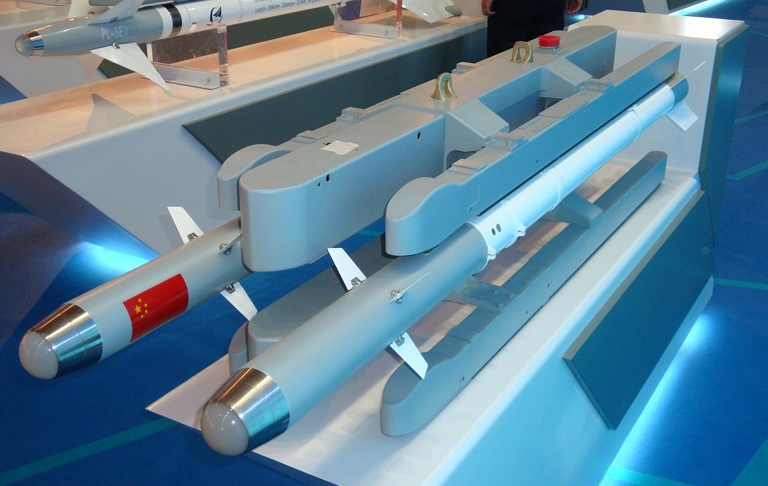 TY-90
short range AAM (image © 2009, Zhenguan Studio).
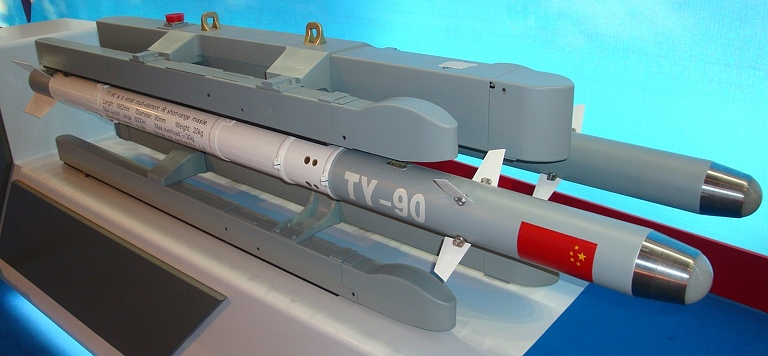 TY-90 short range AAM (image © 2009, Zhenguan Studio). 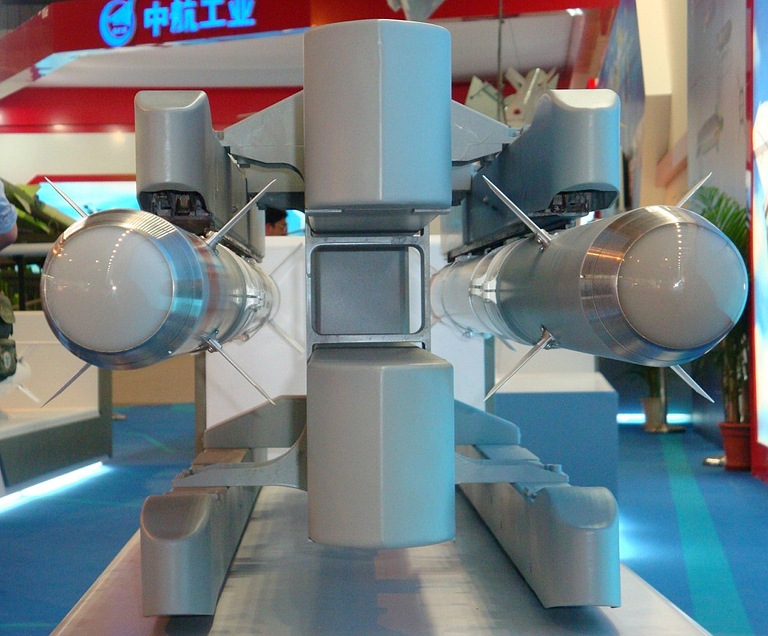 TY-90 short range AAM (image © 2009, Zhenguan Studio). |
Russian AAMs in PLA Service |
 |
Vympel R-77 / RVV-AE / AA-12 Adder
The R-77 was developed as a counter to the AIM-120 AMRAAM, and is often dubbed the AMRAAM-ski. This weapon uses large strakes for lift enhancement, and unique lattice tail controls, derived from an TBM design. Developed during the 1980s, it entered service a decade later on the MiG-29 and Su-27/30 series fighters. The R-77 employs conceptually similar guidance to the AMRAAM, with an inertial unit, datalink uplink receiver and a terminal seeker, specifically the 9B-1348E in the baseline active radar variant. The missile is credited with an A-pole range of 54 NMI, the capability to defeat a 12G target, can be launched at 8 G, and requires an AAKU/AKU-170 launcher. More recently reports have emerged of new seeker options for the missile, following the pattern in the R-27. The R-77T uses an MK-80M seeker from a later model Archer, the R-77P a variant of the 9B-1032 X-band anti-radiation seeker. A rocket-ramjet variant of the missile has been in development since the 1990s, as a counter to the EU Meteor. Designated the RVV-AE-PD, and often labelled the R-77M, this weapon is claimed to achieve an A-pole range of 86.5 NMI. It is unclear what the production status of this model is. Variants of the R-77 have been
exported to most current
operators of late model MiG-29 and Su-27/30 series fighters, and there
are claims the missile may have been licenced by China. The seeker and
guidance package are known to have been licenced by China for use in
the PL-12/SD-10 Sino-AMRAAM. |
Vympel R-73/R-74 / AA-11 Archer
The R-60 was superceded in frontline Soviet units during the 1980s by the R-73 missile, at that time the most capable WVR missile in service and the first fourth generation design. The R-73 introduced key design innovations, including thrust vectoring for post launch agility, canard vanes for high turn performance, a gimballed agile MK-80 seeker capable of 45 degree off boresight acquisition, and an interface to the Shchel 3U series helmet mounted sight. The AIM-9X, ASRAAM and Python 4 were developed to counter the early models of the R-73. The R-73 has been primarily deployed on the MiG-29 Fulcrum and Su-27/30 Flanker, and is part of the standard weapons kit supplied with either fighter for export. R-73 missiles are carried on APU-73 launchers. The R-73 has further evolved. The R-73EL introduced a laser proximity fuse during the mid 1990s, replacing the radio-frequency fuse in earlier models. The R-73M increased range and improved off boresight capability to 60 degrees. The latest R-74 includes digital processing techniques, and is claimed to have a 75 degree off boresight capability. It is likely that future R-74 derivatives will include FPA seeker technology. |
Vympel R-27 / AA-10 Alamo
Comparison
of short burn R-27T1 heatseeker and long burn R-27ER SARH variants.
Note the larger motor of the latter variant (KnAAPO). The Vympel R-27 was introduced as a BVR missile to arm the MiG-29 Fulcrum and Su-27/30 Flanker, making it a contemporary to the R-73 missile. Much larger than the competing AIM-7 series, the R-27 outranged the AIM-7 by a respectable margin. Unlike the Sparrow, the R-27 is supplied with two distinct rocket engine configurations, and a range of seekers. R-27 missiles are thus divided into 'short burn' and 'long burn' variants, recognised by the length of the missile fuselage. In terms of seekers, the baseline semi-active radar guided variants are equipped with a 9B-1101K seeker, these being the short burn R-27R1 credited with 43 NMI range, and the long burn R-27ER1 credited with 70 NMI range. These employ midcourse datalink support, but require terminal illumination. The R-27T1 and R-27ET1 employ derivatives of the R-73's MK-80 agile infrared seeker, compatible with a helmet mounted sight. The R-27P and R-27EP employ a 9B-1032 X-band passive anti-radiation seeker, intended to force an opposing fighter to go 'nose cold'. The most recent enhancement to the R-27 series is the upgrade option of fitting an Agat 9B-1103M active radar seeker and supporting midcourse guidance package, based on the 9B-1348E seeker in the R-77. A fully digital derivative of this seeker, with improved acquisition performance, is available, using Texas Instruments TMS320 processing hardware. Upgraded missiles are designated the R-27A and R-27EA. The R-27 despite its size and
1970s origins remains a formidable
missile, and with the diversity of seekers possible presents genuine
issues for a defending aircraft's countermeasures suite. The weapons is
in service with all regional operators of MiG-29 and Su-27/30 series
fighters, and Chinese sources claim the R-27P has been sighted on the
J-8II Finback.
Long
burn R-27ET1 heatseeker variant under the wing of an Su-35 demonstrator
(KnAAPO). |
References
|
| Imagery
Sources: Xinhua;
PLA-AF; MilitaryPhotos.net;
other Internet sources. |
|
Technical Report APA-TR-2009-0802 |
|
|
|
|||||||||||||
![Sukhoi PAK-FA and Flanker Index Page [Click for more ...]](APA/flanker.png) |
![F-35 Joint Strike Fighter Index Page [Click for more ...]](APA/jsf.png) |
![Weapons Technology Index Page [Click for more ...]](APA/weps.png) |
![News and Media Related Material Index Page [Click for more ...]](APA/media.png) |
||||||||||
![Surface to Air Missile Systems / Integrated Air Defence Systems Index Page [Click for more ...]](APA/sams-iads.png) |
![Ballistic Missiles and Missile Defence Page [Click for more ...]](APA/msls-bmd.png) |
![Air Power and National Military Strategy Index Page [Click for more ...]](APA/strategy.png) |
![Military Aviation Historical Topics Index Page [Click for more ...]](APA/history.png)
|
![Information Warfare / Operations and Electronic Warfare Index Page [Click for more ...]](APA/iw.png) |
![Systems and Basic Technology Index Page [Click for more ...]](APA/technology.png) |
![Related Links Index Page [Click for more ...]](APA/links.png) |
|||||||
![Homepage of Australia's First Online Journal Covering Air Power Issues (ISSN 1832-2433) [Click for more ...]](APA/apa-analyses.png) |
|||||||||||||
| Artwork, graphic design, layout and text © 2004 - 2014 Carlo Kopp; Text © 2004 - 2014 Peter Goon; All rights reserved. Recommended browsers. Contact webmaster. Site navigation hints. Current hot topics. | |||||||||||||
|
Site Update
Status:
$Revision: 1.753 $
Site History: Notices
and
Updates / NLA Pandora Archive
|
|||||||||||||
|
|
Tweet | Follow @APA_Updates | |||||||||||
|
|
|||||||||||||
|
|
|||||||||||||
![F-111 Aardvark Index Page [Click for more ...]](APA/f-111.png)
![F/A-18 Hornet and Super Hornet Index Page [Click for more ...]](APA/fa-18a.png)
![Aerial Refuelling and Airlift Capabilities Index Page [Click for more ...]](APA/aar-lift.png)
![Directed Energy Weapons and Electromagnetic Bombs Index Page [Click for more ...]](APA/dew.png)
![Notices and Updates Index Page [Click for more ...]](APA/notices-128.png)
![APA NOTAM and Media Release Index Page [Click for more ...]](APA/notams-128.png)
![APA Research Activities and Policy / Technical Reports Index [Click for more ...]](APA/research-128.png)
![Search Air Power Australia Website [Click for more ...]](APA/search-128.png)
![Briefings and Submissions - Air Power Australia [Click for more ...]](APA/briefs-128.png)
![Air Power Australia Contacts [Click for more ...]](APA/contacts-128.png)
![Funding Air Power Australia [Click for more ...]](APA/funding-258.png)
